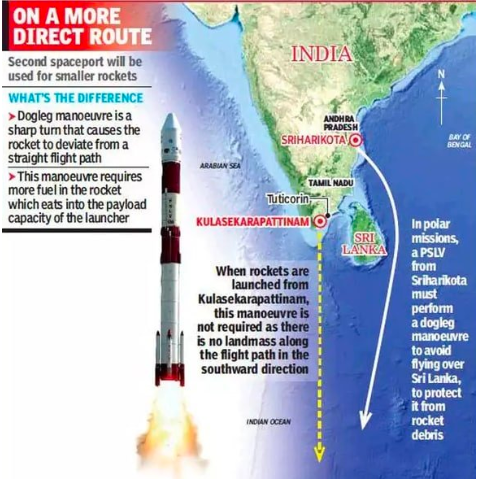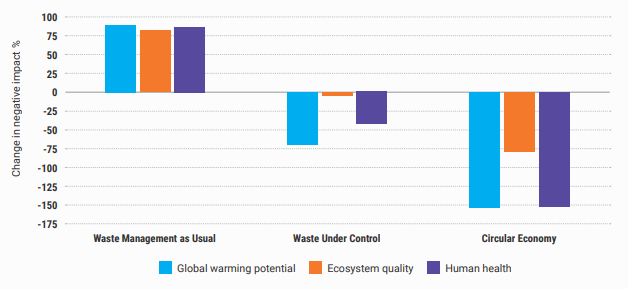Improvised Explosive Devices (IED)
The recent explosion in Bengaluru’s Rameshwaram Cafe was prima facie caused by an improvised explosive device (IED).
- IED – It is basically a home-made bomb which may range from a small pipe bomb to a sophisticated device capable of causing massive damage and loss of life.
- Smaller bombs are easier to hide, carry, deploy and are also generally much less damaging than larger ones.
- Deployment – Using a vehicle, carried, placed, or thrown by a person, delivered in a package, or concealed on the roadside.
The term “IED” 1st entered common usage was during the United States’ Iraq invasion (beginning in 2003), where such bombs were commonly used against US forces.
- Components
- An initiator – A trigger to set the explosion off.
- A switch – It arms the explosive.
- A main charge – It causes the explosion.
- A power source – Mostly, an electric initiator that require an electronic power source.
- A container – An enclosure of all other components.

- Enhancements – Nails, glass, or metal fragments to increase the amount of shrapnel released and thus the damage it causes.
- It may also include hazardous toxic chemicals, or radio-active substances.
The colloquial name of an IED packed with depleted Uranium is dirty bomb.
- Materials used – It include fertilisers such as ammonium nitrate and urea nitrate, gunpowder, and hydrogen peroxide.
- Damages – The extent of damage depends on its size, construction and placement.
Notable instances of IEDs usage in India include the 1993 Mumbai serial blasts, the 2008 Jaipur blasts, the 2006 Jama Masjid bombings, and the 2013 Bodh Gaya bombings. It have also been commonly used by Maoist insurgents, and Kashmiri militants.
Reference
The Indian Express| IED blast in Bengaluru
MILAN 2024
The 12th edition of Milan exercise held recently in Visakhapatnam, the city of Destiny in 2024.
|
MILAN
|
- Originated in – 1995, was originally conceived in line with India’s ‘Look East Policy’.
- Host – India
- Duration – Biennial
- Type – Multi-national naval exercise
- Founding Members – India along with Indonesia, Singapore, Sri Lanka and Thailand.
- Aim – To enhance cooperation and interoperability among the navies of diverse participating countries.
- Exercise – It includes professional exercises, seminars, social events and sporting fixtures.
|
- Aim – To enhance professional interaction between friendly navies and gain experience in multilateral large force operations at sea.
- Theme – 'Camaraderie, Cohesion, and Collaboration’.
- The Harbour Phase – It will have Table Top Exercise, Interactions of Young Officers, Outstation Cultural visits and International City Parade.
- The Sea Phase – Indian Navy ships, aircraft and submarines led by Indigenous aircraft carrier INS Vikrant and 20-25 Foreign Naval Units will participate.
- It includes advanced air defence operations, Anti-Submarine warfare, Anti Surface warfare operation and War at Sea.
- Significance – An opportunity to share operational insights in harbour, hone skills at sea, enhance camaraderie on the sports fields, and gain an exposure to Indian culture.
- Strengthens Southeast Asian countries – Security of vital sea lines of communication (SLOCs) in the Indian Ocean is important for energy and trade interests.
- It helps to expand their naval engagements beyond their traditional geographical neighbourhood.
- Singapore, Indonesia, and Thailand since 1995, Malaysia in 1997, Myanmar in 2003, and Brunei, Cambodia, the Philippines, and Vietnam in 2012.
Malacca Strait links the Andaman Sea of the Eastern Indian Ocean to the South China Sea and serves as a transit for over 40% of global commodities.
The Philippines and Indonesia are the largest and 3rd largest suppliers of seafarers, respectively.
References
- Times of India| Importance of Milan Exercise to South East Asia
- In-Milan| MILAN 2024
Kulasekarapattinam Spaceport
The Rohini Sounding Rocket was launched from the mobile launch pad to mark the commencement of physical work on the Kulasekarapattinam spaceport.
- Geographical location – Thoothukudi district of Tamil Nadu.
Kulasekaranpattinam, better known for its Dussehra celebrations at Sri Mutharamman Temple.
- Role – It is ISRO’s 2nd satellite launch facility, would be completed within 2 years to launch SSLVs in order.
- It would have the capacity to launch 24 satellites per year.
- Need – The rockets launched from ISRO’s Sriharikota facility in Andhra Pradesh 1st heads east, and then turn south to avoid the Sri Lanka’s airspace, costing more fuel and reduce payload’s capacity.
- Geographical advantages – It can head straight in the southern direction without a dogleg manoeuvre and closer to equator than Sriharikota thereby reducing time and fuel wastage.

- Economic significance– It is relatively closer to the ISRO Propulsion Research Complex located in Mahendragiri, in Tirunelveli district, Tamil Nadu.
- It makes it easier to transport the rocket components safely in shorter time, thus reducing the costs involved.
- Safety considerations – Proximity to the eastern coastline of India are safer, as any failure of launches allow the debris to fall harmlessly in Bay of Bengal or Indian Ocean.
- Promotes development – A number of allied industries will come up in the neighbourhood that will create 1000s of jobs.
Quick Facts
- Geo-stationary satellites – They are usually communication satellites or satellites used for scientific research such as the International Space Station which are placed in the orbit that are parallel to equator.
- Launching these satellites from the sites near the equator towards the east direction will get an initial boost equal to the velocity of the Earth surface.
- Polar satellites – They are placed in polar orbits moving across the equator in north south direction and are generally launched in southward or northward direction.
- Therefore, they cannot take advantage of the Earth’s rotation.
- Small Satellite Launch Vehicles (SSLVs) – They are designed to launch light-weight satellites less than 500 kg into the lower earth orbit at low costs.
Reference
The Hindu| Significance of Kulasekarapattinam Spaceport
Global Waste Management Outlook
The report ‘Turning rubbish into a resource: Global Waste Management Outlook 2024’ was launched during the 6th UN Environmental Assembly (UNEA-6) at the UNEP headquarters in Nairobi, Kenya.
- Published by – UN Environment Programme (UNEP) and the International Solid Waste Association (ISWA).
- 2024 report – It provides an update on global waste generation and the cost of waste and its management since 2018 with main focus municipal solid waste.
- Key findings – Municipal solid waste generation is predicted to grow to 3.8 billion tonnes by 2050.
- Municipal solid waste, an equivalent of 27% of the global total waste, is not being collected.
- More than a third of the world’s population is drowning in waste.
- Over 2.7 billion people in the Global South and developing regions of the world not having their waste collected.
In the developed and upper middle-income regions of the world, almost all of the waste is collected between 83% for the Caribbean and 99% for North America.
- By 2050, the global annual cost of waste management could almost double than 2020 levels.
- Waste prevention and management measures could limit net annual costs by 2050 to USD 270.2 billion.

- Recommendations – Multinational development banks and donors can support proven zero waste and circular economy initiatives.
- National governments can legislate to deliver the waste hierarchy, incentivise zero waste business models, and apply producer responsibility fees to prioritise waste reduction.
- Emphasis on ‘upstream’ measures at manufacturing stage, as opposed to ‘downstream’ measures which involved managing waste.
- Prioritize municipal solid waste management.
- India – The thriving street food sector across India depends heavily on single-use plastics (SUP), which translate into a nationwide waste management burden and cost to society.
- Adopting a reusable packaging system would translate into being both economically viable and environmentally sustainable.
Waste contributes to the triple planetary crisis of pollution, climate crisis, and biodiversity loss.
References
- Down To Earth| Release of Global Waste Management Outlook
- UNEP| Global Waste Management Outlook 2024
- Down to Earth| Waste issues in India
Bitcoin Halving
Crypto traders and Bitcoin miners are preparing for Bitcoin halving that is predicted to happen in April 2024.
|
Bitcoin (BTC)
|
- Definition - A form of digital currency, created and held electronically and aren’t printed, like rupees or dollars.
- It’s the first example of a growing category of money known as cryptocurrency.
- Origin – Satoshi Nakamoto proposed bitcoin, which was an electronic payment system based on mathematical proof.
- Created – Digitally, by a community of people that anyone can join.
- Mined – Using computing power in a distributed network.
|
Bitcoin (BTC) can only ever be 21 million BTC in the world, over 19 million have already been “mined” or released.
- Reward for mining – It is given to the person who solves the puzzles 1st which is currently set at 6.25 Bitcoin (BTC).
- While the reward is set, the true value of this prize fluctuates based on BTC prices in the market, and when the owner chooses to sell.
- Bitcoin Halving – It refers to the 50% reduction in the reward paid to Bitcoin miners who successfully process other people’s cryptocurrency transactions.
- Occurrence – It takes place after 2,10,000 blocks are mined, and has happened so far in 2012, 2016, and 2020, every 4 years.
- Need – This saved reward will be added to the public digital ledger known as the blockchain.
- Significance – Bitcoin mining increases the supply of BTC in circulation while the Bitcoin Halving reduces the rate at which these coins are released, making the asset scarcer.
- Scarcity is seen as pushing up prices, as is the case with gold.
- Impact on investors – It depends on the investor in question, and the extent of their involvement with Bitcoin and its ecosystem.
- For example, a corporate-level miner will probably be desperate to earn their block reward in these last days.
- A new trader who has invested a small sum of money might not even react to the news of the halving.
- A more experienced trader might try increasing their Bitcoin investment hoping to profit from a possible price crash.
- Impact on crypto market – It varies as every halving in Bitcoin’s history has been wildly different.
- It depends on varied factors like blockchain-related factors, diverse geopolitical events or economic shocks, among others.
Reference
The Hindu| Bit Halving


